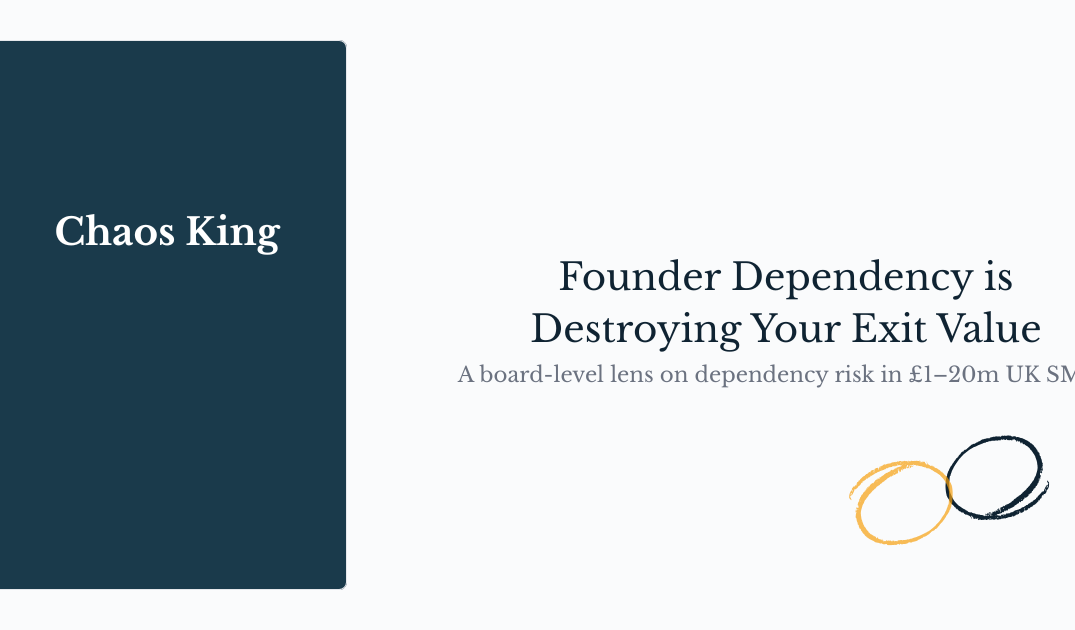The Founder's Trap: When Success Becomes Your Prison
In many UK SMEs, approximately 30-50% of leadership time disappears into reactive firefighting rather than strategic building (experience estimate). The brutal truth: some founders aren't just victims of this chaos. They're addicted to it.
The Chaos King thrived in the early days when every problem landed on their desk, when their quick thinking saved the day, when being indispensable felt like success. Now, three years later, they're still the bottleneck for every meaningful decision. Their identity is embedded ego-deep in being the central problem-solver. Their business has grown, but their leadership hasn't.
The market has noticed. Businesses with high founder dependency now receive systematic valuation discounts in UK mid-market transactions, through lower headline multiples and earn-outs. It's how risk gets priced.
While 31% of UK SME owners plan to exit within five years, only 18% have fully established plans with 37% having no plan even over a ten-year horizon (Ownership at Work, 2023). These aren't just statistics. They're early warnings of founders trapped in their own success, building unsellable assets because the value lives in their heads, not in systems.
The Transferability Framework diagnoses whether you're building a business or building a dependency. By the end, you'll know exactly which side of that line you're on.
Section 1: The Chaos King's Four Fatal Symptoms
Diagnosing Your Addiction to Firefighting
Chaos Kings share four behavioural patterns that feel like strength but function as systematic value destruction:
Symptom 1: Decision Hoarding
Every decision above £5k still lands on your desk. You've convinced yourself this is quality control. It's actually capability destruction. Your team stops thinking strategically because they know you'll override or second-guess them anyway.
Symptom 2: Crisis Validation
You feel most valuable when fixing urgent problems. The dopamine hit of solving fires has become addictive. You've unconsciously created systems that generate crises to justify your centrality.
Symptom 3: Delegation Theatre
You assign tasks but retain authority. "Keep me in the loop" becomes "I'll still make the real decisions." Your direct reports become highly paid administrative assistants, not genuine leaders.
Symptom 4: Growth Panic
As the business expands, complexity grows faster than your individual capacity. Instead of building systems, you work longer hours. Instead of developing people, you hire more doers. The gap between what needs managing and what you can manage widens monthly.
A UK mid-market PE partner (anonymised practitioner insight, March 2025) put it bluntly: "We no longer just buy a business; we invest in a system and a team that runs it. If the system is in the founder's head and the team is just the founder, we're not buying a business. We're hiring a very expensive, high-risk employee."
Key Insight Box — The Modern Buyer's Reality
Buyers now systematically discount founder-dependent businesses not because they lack capability, but because that capability can't transfer. What feels like indispensability to you looks like fundamental risk to them.
The inflection typically emerges during the leap from founder-led tribe to scalable enterprise, when headcount hits 25-50 people and operational complexity exceeds individual bandwidth. Military command structures discovered something counterintuitive: effectiveness increases with distributed authority. The same principle applies here. Control doesn't require presence. It requires architecture.
